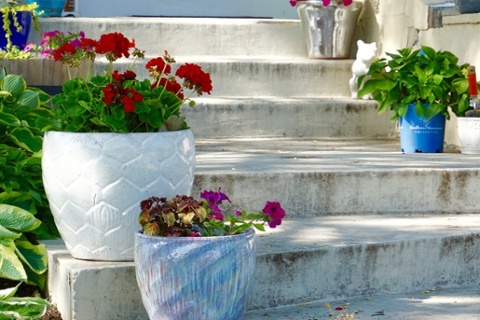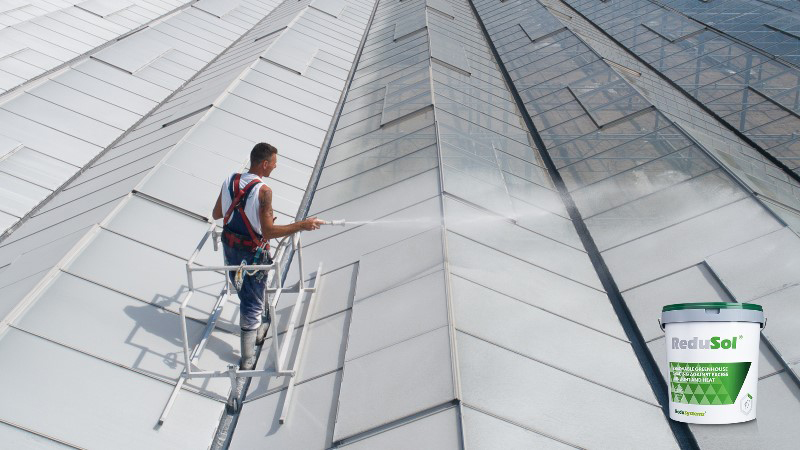14 Consumer Gardening Trends That Have Stood the Test of Time
 On September 12, the Garden Media Group (GMG), which partners with companies and people who want to grow their business by increasing the global love of gardening and appreciation for nature, will unveil its 2018 Trends report.
On September 12, the Garden Media Group (GMG), which partners with companies and people who want to grow their business by increasing the global love of gardening and appreciation for nature, will unveil its 2018 Trends report.
Each year, GMG researches global consumer trends to see what’s happening from home design to fashion. GMG team members talk with trusted media sources and garden experts worldwide, then they read the tea leaves, peer into a crystal ball, and share what they see up and coming in gardening, landscape design, and green living, so all floriculture industry members can be in the know.
In anticipation of the release of the 2018 report, the editors of Greenhouse Grower asked the Garden Media Group to take a step back in time and uncover which trends they accurately predicted would take shape and stick around for the long term. For example, in its first report in 2001, GMG predicted outdoor living would be a huge trend. It predicted container gardening in 2003 and the rise of vegetable gardening as early as 2004. It spotted a renewed interest in natives in 2007, the buy local movement in 2008, and vertical gardening in 2009.
Here’s a list of 14 other trends in horticulture, gardening, and more that stood the test of time. This list also includes links to the full reports from GMG (the reports were first made digital in 2005), as well as quotes directly from those reports, if available.
1. (2002): Decorating with Containers
2. (2002): The Outdoors is the New Living Room
3. (2003): Boom Without the Bloom — Foliage and Tropical
4. (2005) Organic Gardening is Not Just for Tree Huggers
(From the 2005 report): “This trend is getting stronger each year. Eschewing chemicals once meant that gardeners tolerated some disease, damage, and weeds in their gardens. Now, a growing number of neighborhood nurseries and garden centers are offering education and environmentally friendly product alternatives that were formerly only found through organic gardening organizations. Environmental products sales are up 200% in the last five years.”
5. (2005): Curated Consumption
(From the 2005 report): “Consumers are time starved and overwhelmed with the avalanche of choice in a garden center. To help navigate their shopping experience and make it move efficiently,today’s gardeners are turning to experts like Allan Armitage and Michael Dirr to help them make smart choices in plant purchases and to give them plant care advice. After selecting the plants that work for them, consumers can find where they’re sold in a matter of a mouse click.”
(from GMG’s “Thursday Throwback” blog): “It’s safe to say that all consumption today is curated. Unlike 2005, most people can’t imagine a time when the internet wasn’t available. We’re connected at any given time through email and social media, and it’s normal in this day and age to be bombarded with information about products and brands. Unlike 2005, consumers are also extremely savvy and are able to cut through the noise online.”
6. (2006) Home Grown is in
(from the 2006 report): “Reflecting society’s current enthusiasm for healthy eating and a desire for fresh, flavorsome fruits and vegetables, vegetable gardening is coming back en vogue. Herbs and veggies are being grown alone or mixed in containers. Growing your own vegetables and flowers is the new status symbol of luxury.”
7. (2006): Safe Gardening/Sustainable Gardening
(from the 2006 report): “In keeping with the healthy living trend, consumers are seeking sustainable gardening principles. As a result, there is a shift to get plants off chemicals and on a healthier, holistic lifestyle. More than ever before, gardeners are realizing that great gardens begin underground with nutrient-rich soil, and many products make it easy to enhance soil quality for naturally healthy lawns and gardens.”
(from GMG’s “Thursday Throwback” blog): “It’s clear that the sustainable lifestyle trend is here to stay. Clean gardening is the new normal, and today’s savvy consumers understand that what they put on their lawns and gardens directly impacts their health. Today’s clean gardeners opt for natural products that contain no synthetic fertilizers, pesticides, and seeds.”
8. (2006): Pot Scaping/Container Gardening
(from the 2006 report): “Container gardening has stepped off the back porch and patio and moved into the landscape, showing up in beds and borders or standing alone like an eye-catching exclamation point. Busy homeowners find decorating their yards with spots of pots is an easy way to splash color throughout the yard.”
(from GMG’s “Thursday Throwback” blog): “Container gardening has taken a new, advanced form. Today, containers have fully expanded beyond the limits of the porch or landscape. It’s not uncommon to find container plants in houses, dorm rooms, and even at work. The modern wellness hotspot trend highlights the need for containers — and houseplants — in all spaces.”
9. (2008) Gardening for the Birds and Bees
(from the 2008 report): “As we seek to restore the balance of nature, creating natural shelter that birds can retreat to and planting flowers and plants to attract and feed wildlife is increasingly becoming more important. Potting up evergreens, planting vines beneath a deck railing, and even potting up flowers and placing them around a deck or patio will give these creatures a place to hide, and for some birds, bees, ladybugs, and even bats and other beneficial insects, fruit and nectar to eat. Planting or potting red blooms will attract hummingbirds, bees, and butterflies.”
10. (2008) The C Generation
(from the 2008 report): “Generation C is the customer-made generation, with the C standing for content, creativity, and control. It is a generation of true storytellers, and for them, sharing an experience may become as valuable — if not more valuable — than the actual experience itself. It’s important to teach them how to be successful, help them learn something, involve them in your creative process, customize with them, and let them share their own stories and successes.”
(from GMG’s “Throwback Thursday” blog): “Ideals from 2008’s C Generation have only increased in popularity today. Social media has turned everyone into a content creator and essentially their own brand. Millennials and Generation Z still value creativity and individualism over anything else and are skeptical of brands that aren’t authentic online.”
11. (2009): Blended Gardens/Clean Gardening
(from the 2009 report): “Planting mini vegetables and being able to say you grew it yourself is hip and cool. Fruit bearing shrubs and trees provide color, privacy, and fruitful bounty mingling among veggies and perennials. Garden centers are reporting an increase in demand for fruit-bearing shrubs like blueberries, raspberries, blackberries, and elderberries being used as ornamentals.”
(from GMG’s “Throwback Thursday” blog): “Blended gardens are not only the norm, but the industry standard. This trend paved the way for future concepts that merged the outdoors and eating. Top trends like gardentainment and drink-your-garden were built on the blended garden concept. Gardens today are not only a mixture of food and ornamentals, but a combination of indoor and outdoor gardens.”
12. (2011): Indoor Gardening
(from the 2011 report): “Extend nature’s influence by bringing the outdoors in with houseplants. From Victorian hipster décor rocking among young urbanites to upscale suburban homes, orchids, ferns, and palms are now wildly popular.”
(from GMG’s “Throwback Thursday” blog): “Indoor gardening now takes many forms. The health benefits of houseplants are now as popular as the plants themselves. New research has strengthened the idea that plants are good for you. Houseplants such as bromeliads, spider plants, and dracaena remove the harmful compounds frequently found in homes and offices.”
13. (2013) Year of Bliss/Bliss at Work
(from GMG’s “Throwback Thursday” blog): “In 2013, people wanted to start living in the moment and turned to nature as inspiration. The garden industry responded to this need by creating products that were handmade, traditional, and friendly to the planet. This trend marked the beginning of consumers holding brands accountable for their actions. Companies who didn’t help the planet and weren’t genuine in their missions did not succeed.
Flash forward to today, and The Year of Bliss has exploded in both the gardening and health and wellness industry. Healthy is the new wealthy, and consumers today are turning to wellness hot spots and activities like garden therapy, forest bathing, and soundscaping to find joy and meaning. People are also gaining a deeper love and appreciation for trees as cutting-edge research proves that the tree canopy — and the noise it blocks — impacts our mental health and quality of life.”
14. (2014): Dress up Your Yard
(from GMG’s “Throwback Thursday” blog): “The economy was experiencing a positive uptick in 2014, which meant people were investing money in sprucing up their homes — both inside and out. Plants and accessories were seen as the new top decorations in the modern outdoor rooms. Nature was used to enhance the appearance of the home both inside and out as greenery quickly became a staple in top home décor trends.“
Though the idea has evolved, the concept of dressing up the yard is still as relevant as ever. The 2017 trend when it comes to dressing up the garden is tidy gardens. People are decluttering and evaluating what brings them joy. And it doesn’t stop inside. The idea of tidy gardens does not mean trimmed hedges and clean corners. It means finding bliss in what you do, not in what you have. A global shift toward reduced consumption is ultimately driving this trend. When it comes to the garden, quality is definitely better than quantity.”










